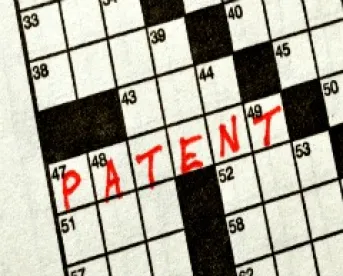Takeaway: It is recognized that attorneys will have some role in preparing expert declarations, and the Board is unlikely to discredit a declaration as a whole on that basis unless it is proven that the attorney “ghost wrote” the declaration.
In its Final Written Decision, the Board found that all challenged claims (1-3 and 5-7) of the ’679 Patent are unpatentable. The ’679 Patent is directed to a lighting device including a light-emitting device having a light flux controlling member.
The Board began with evidentiary matters. The Board addressed Patent Owner’s contention that Petitioner’s expert’s declaration should be given little or no weight because it appears that the expert is only offering testimony that was written for him by counsel for Petitioner. Petitioner disputed that allegation. The Board found that Patent Owner had not articulated a persuasive reason for giving the declaration as a whole little or no weight, recognizing that it is generally understood that there will be some attorney involvement in the preparation of the declaration. The Board further stated that Patent Owner had not provided adequate evidence that the declaration was “ghost written” by an attorney. Petitioner also contended that Patent Owner’s expert’s declaration be given little or no weight because the expert had no relevant experience. The Board declined to make that determination as to the declaration as a whole.
The Board then discussed claim construction, stating that terms are given their broadest reasonable interpretation in light of the specification. The Board adopted its construction from its Decision to Institute.
The Board then discussed the merits of the claims, starting with whether claims 1, 3, and 7 are anticipated by Yoon. The Board began by discussing whether Yoon discloses “the light-incoming surface having a concave curve part,” and specifically whether the inner surface of Yoon’s lens is a “concave curve part.” Petitioner relied on the illustrations, and the Board found that Yoon’s illustrations supported Petitioner’s argument. The Board then reviewed whether the R1 and R2 limitations are disclosed by Yoon. Patent Owner argued that the only basis for Petitioner’s position is the measurements of the dimensions of a digitalized figure of Yoon prepared by Petitioner’s expert. The Board found that this was a mischaracterization and that Patent Owner did not address Petitioner’s true evidence on this point. Therefore, the Board found that claims 1, 3 and 7 are anticipated by Yoon.
The Board next discussed whether claims 2 and 3 are obvious over Yoon and Wanninger, and whether claims 5 and 6 are obvious over Yoon and Horie. Because Patent Owner only challenged these claims on the same basis as claim 1, the Board found that Petitioner had met its burden.
Next, the Board reviewed whether claims 1-3 and 7 are obvious over Wanninger and Hsieh. The parties’ dispute focused on the R1 and R2 limitations. Again, the Board found that Patent Owner did not address all of Petitioner’s arguments, and found that claims 1-3 and 7 are obvious over Wanninger and Hsieh. Finally, the Board also found that claims 5 and 6 are obvious over Wanninger, Hsieh, and Horie because Patent Owner did not make any unique arguments.
Seoul Semiconductor Co., Ltd. and North America Seoul Semiconductor Inc. v. Sharp Kabushiki Kaisha and Enplas Corporation, IPR2014-00879
Paper 33: Final Written Decision
Dated: October 15, 2015
Patent 7,798,679 B2
Before: William A. Capp, James B. Arpn, and Jeremy M. Plenzler
Written by: Planzler



 />i
/>i

